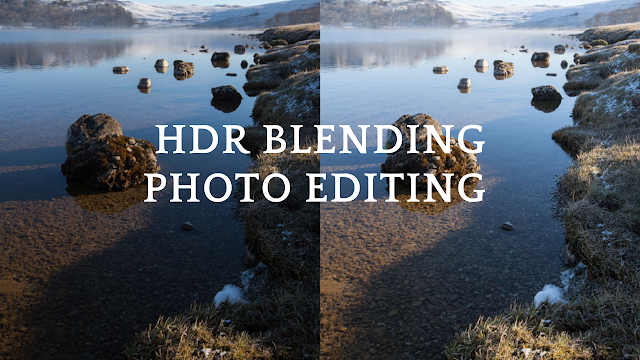Importance Of HDR Blending Photo Editing
HDR photography is becoming increasingly popular among a wide range of people. Everywhere we look, photographers are sharing the results of their HDR photo experiments. It inspires us to take a few HDR photos of our own. But what is the importance of producing truly unique high dynamic range photography? In this article, we will get to know about the benefits of this sort of photo editing.
HDR photography is surprisingly simple to produce. It simply entails taking multiple images at different exposures with the appropriate camera settings. When doing HDR photography, you must capture many images at different exposure settings, so your shutter speed selection is critical. When taking HDR photos, auto exposure bracketing is the best tool for this. After capturing multiple images, HDR processing is required to create a final HDR image. This is possible with dedicated HDR software.
To create one HDR image, the HDRphotography technique requires taking at least three photos of the same
high-contrast scene. Creating HDR images in this manner necessitates the use of
a good tripod for bracketed exposures. Creating HDR images at various exposures
while hand-holding your camera will not yield satisfactory results for HDR
photography. Each photo for the HDR image must have the same composition, or
else the ghosting effect will appear once the HDR processing is complete.
What Exactly Is HDR Blending?
High Dynamic Range (HDR) Blending is a
powerful post-processing technique used by photo editors. By combining multiple
images with varying exposure levels, you can create a final image with perfect
lighting that highlights the most important aspect of the property. This final
output will have a wide dynamic range, allowing the audience to see all of your
property's best features.
By balancing the bright spots and shadows,
experts can structure flawless images. HDR blending allows photographers to
represent the property more accurately than the human eye can. Because a camera
does not always evaluate light in the same way that our eyes do. As a result,
we must structure the look to be more realistic. Furthermore, HDR image
blending does the work for you. Most photographers outsource HDR photo blending
to a dependable service provider. They have a team of imaging experts on staff
who are well-versed in the most advanced image editing software.
Importance Of HDR Photo Blending Photo Editing In Real
Estate Images
Experts in HDR image blending carefully
merge images with multiple exposures to deliver the perfect output in a single
image. The HDR images have the required depth and clarity after editing. This
technique significantly improves the appearance of the property by emphasizing
all of its details. Images in formats such as JPEG, PNG, TIFF, and others can
be blended.
Because HDR blending significantly improves
the quality of real
estate images, posting such flawless images online is more likely to
impress the target audience. The audience prefers to see high-definition images
of the property because they provide greater clarity and focus on the interior
details.
However, if you are not skilled in image
editing or do not have the time to edit your real estate images, you can use
HDR while capturing property images to upscale your photography.
What is the appeal of HDR photography?
HDR photography is popular because a
digital camera cannot record such a wide dynamic range of tone in a single
frame as the human eye can. The dynamic range of a camera refers to how well it
can record the darkest and brightest areas of a composition. Even the most
advanced digital cameras cannot currently record the entire dynamic range in
high-contrast scenes.
The HDR process is possible by taking
multiple exposures with either manual or automatic exposure bracketing. Because
the images are combined into a single final image at varying exposure values,
the tone mapping features in the software allow for a more complete dynamic
range to be visible in the final image.
Landscape photography employing the HDRphotography technique has grown in popularity. Almost all landscape
photographers now use HDR mode to capture a bright sky and dark shadows in an
HDR photo while retaining detail in both extremes of the dynamic range. This
may not be possible in a single digital camera image.
The dynamic range of modern digital cameras
is greater. As sensor technology advances, the need to create an HDR photo will
become less appealing. Especially for landscape photographers who prefer to
shoot RAW files with their camera gear.
The depth of tone range in a single RAW
image file can be greater than the depth of tone range in three images taken at
different exposure values. This is easier if the composition contains no bright
highlights. Because the brightest highlights are always more difficult to
post-process, HDR photography remains popular.
How Does High Dynamic Range Work?
An HDR photo is a collection of photos of
the same subject taken at various shutter speeds and exposure levels.
It's essentially a set of three
"bracketed" images, with each image displaying varying degrees of
luminosity. (If you're unfamiliar with bracketing, it's a technique in which a
photographer takes multiple shots of the same image using different camera
settings.)
Bracketed images are then blended using
photo editing software to create a final image that shows all details in
perfect exposure.
Conclusion
When it comes to real estate photography,
HDR is a must-have tool. However, if you are unfamiliar with post-production
techniques such as HDR blending, you may get carried away with the process. You
may also end up with images that are too balanced or unrealistic. That is why it
is always preferable to delegate HDR image blending to photo editing professionals.


.png)

Comments
Post a Comment